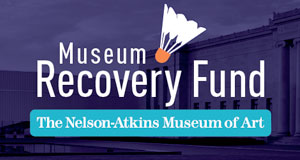The questions below invite you to take a deeper dive into ideas, attributes, and images in the Google Arts & Culture presentation of Gordon Parks X Muhammad Ali. Consider these ideas on your own or discuss with a family member, classmate, or fellow photography or sports lover.
Muhammad Ali, Miami Beach, Florida, 1966
Consider the formal photographic attributes of this image, including framing (what is included within the boundaries of the image), focus (areas that appear sharper or fuzzier), and contrast (visual differences in tone, texture, etc.).
- How did Parks use these elements to create a sense of presence and power?
Parks and Ali became friends through their time spent together on the Life magazine projects.
- What aspects of this image suggest Ali was comfortable in Parks’s presence?
Parks used this as the first photograph in his 1966 Life article, which he titled “The Redemption of the Champion.”
- What message does this image send about Ali? Why do you think Parks chose to feature this photo so prominently?
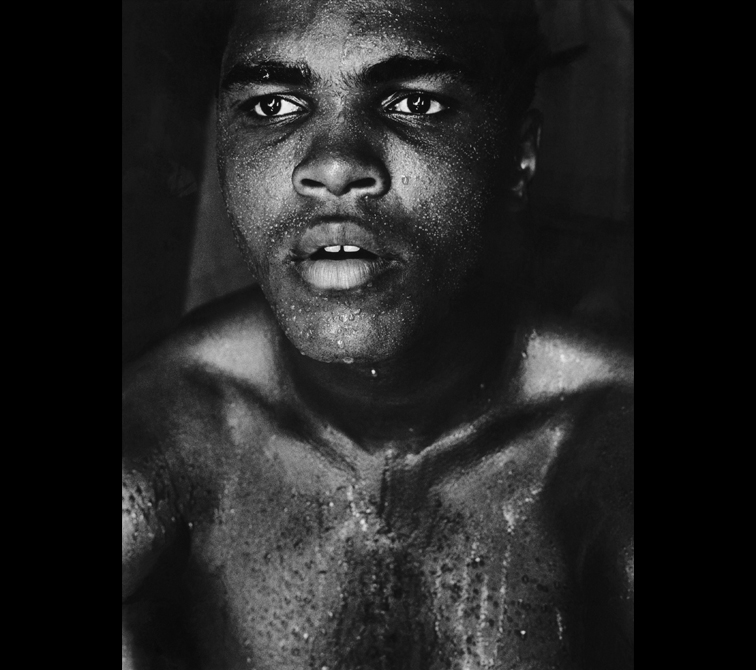
Untitled, London, England, 1966
- How would you describe the use of light in this image?
- How would the photograph be different if Parks had changed the lighting or contrast?
Parks’s 1966 Life article suggests that, while he did not agree with the militant rhetoric of the Nation of Islam, he was interested in Ali’s relationship to the movement and to his faith.
- What mood does Parks convey in this photograph of Ali praying?
Parks did not publish any of the photos he took depicting Ali’s ties to the Nation of Islam, because he knew they could provoke a harsh reaction among Life’s readership.
- If you were him, would you have made the same decision? Why or why not?
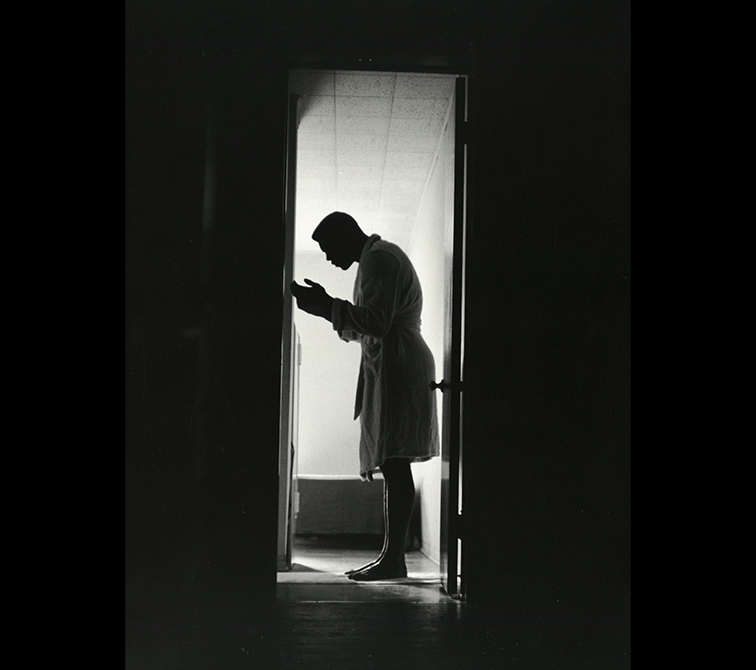
Untitled (Lord’s Cricket Ground, St. John’s Wood), London, England, 1966
- Where do you see repeated lines or shapes in this image? How do they help create an interesting composition?
Even when Ali was at his most controversial, Parks recognized the boxer was capable of establishing a great legacy.
- What elements within this photograph suggest a sense of greatness or promise?
Imagine you were writing a magazine article and headline to accompany this photograph.
- What would the headline say?
- What would the tone of the article be?
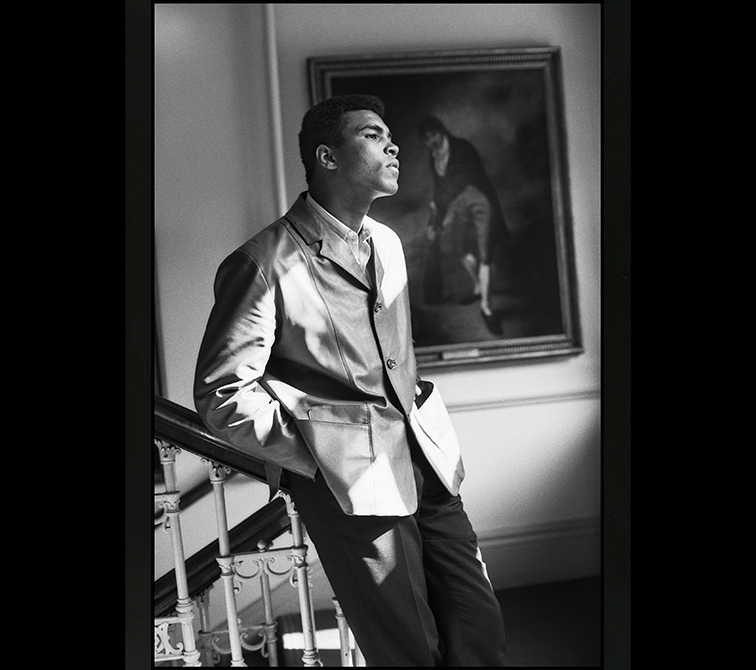
Untitled, London, England, 1966
Consider what this image says about Ali’s relationship with the public. Recounting the fervor of reporters and fans in London, where the boxer had traveled for a fight, Parks noted: “The adoration finally took its toll.”
- Do you see any echoes of that sentiment in this image?
- Where is Parks’s camera in relation to the scene he is photographing here?
- How does that vantage point affect the meaning or impact of this image?
- What does Parks’s location within this scene tell us about his relationship to Ali?
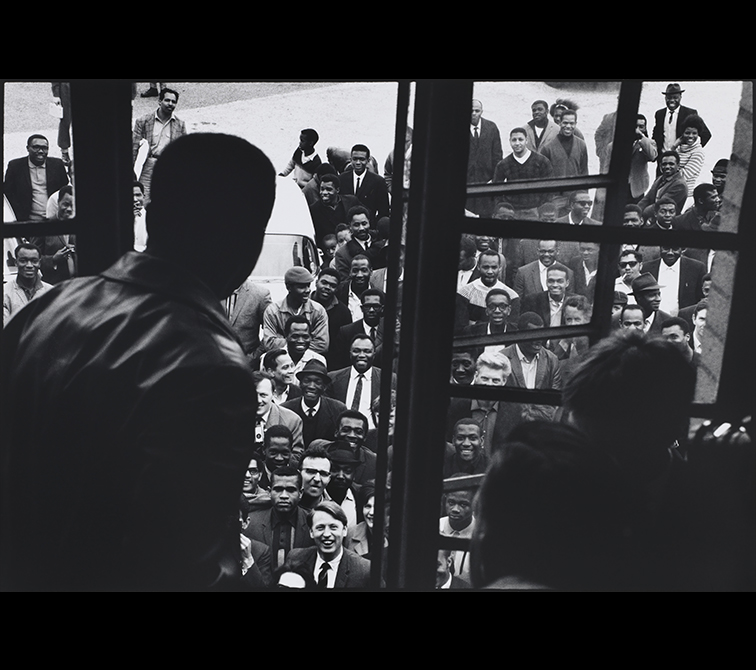
Untitled (Champburger), Miami, Florida, 1970
Muhammad Ali is not at the center of this photograph, yet his face is the focal point of the image.
- What has Parks done to direct your eye to Ali?
Consider the expression on Ali’s face here. Surrounded by young fans awaiting his autograph, he makes direct eye contact with Parks’s camera.
- If you were Parks, what might you imagine Ali is thinking?
- What do you think this photograph says about the celebrity status of athletes?
- Could a photograph like this be taken of a contemporary superstar?
- How might it be similar to and different from this image of Ali?
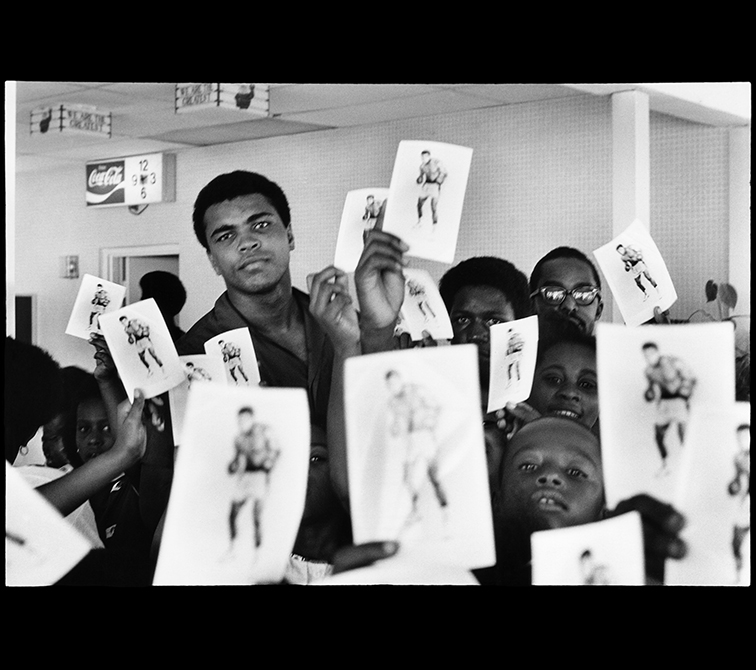
After you’ve explored Gordon Parks X Muhammad Ali, you might spend some time considering photographs of other influential public figures. Think about the possible choices that may have impacted creating those images, including decisions about formal qualities, context, and intended audience. All of those factor into the message each photograph sends about its subject.
